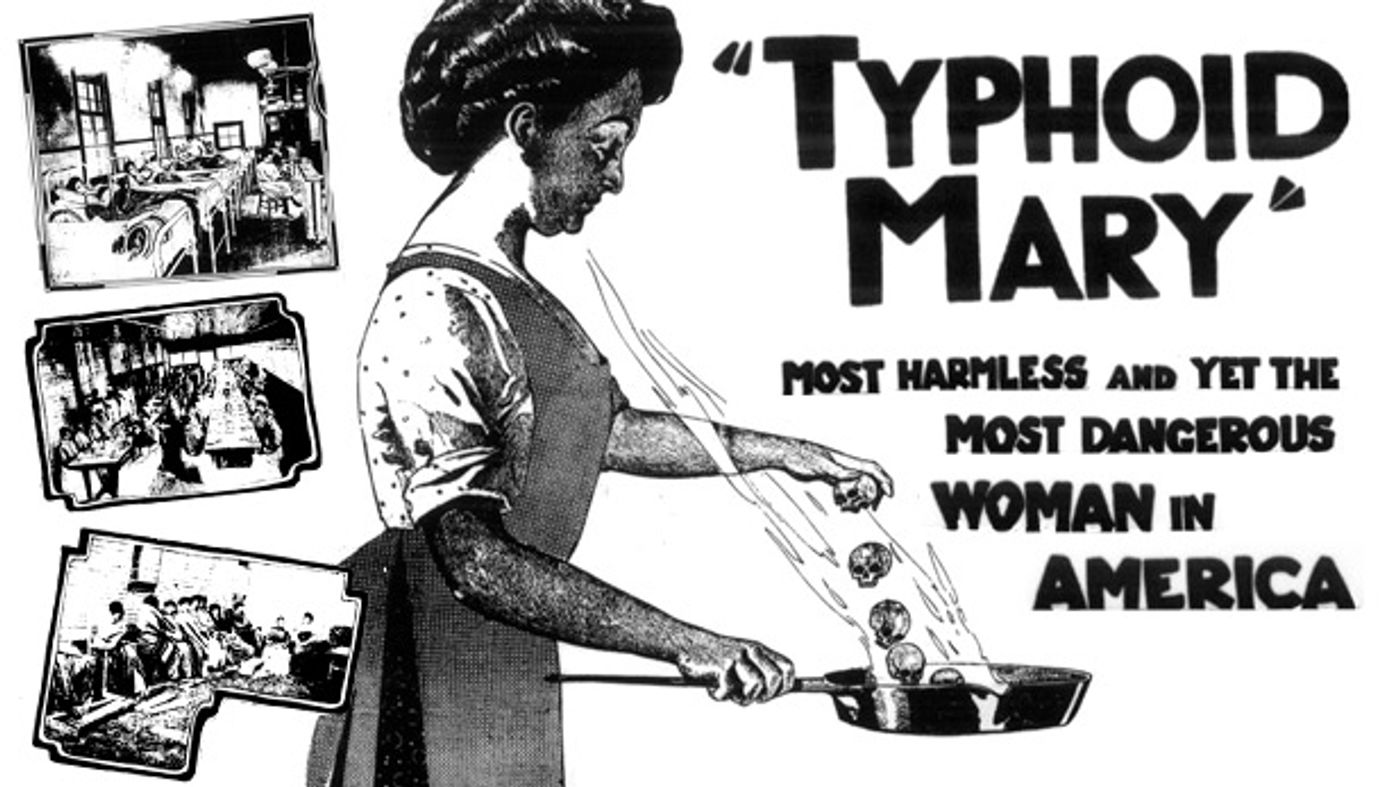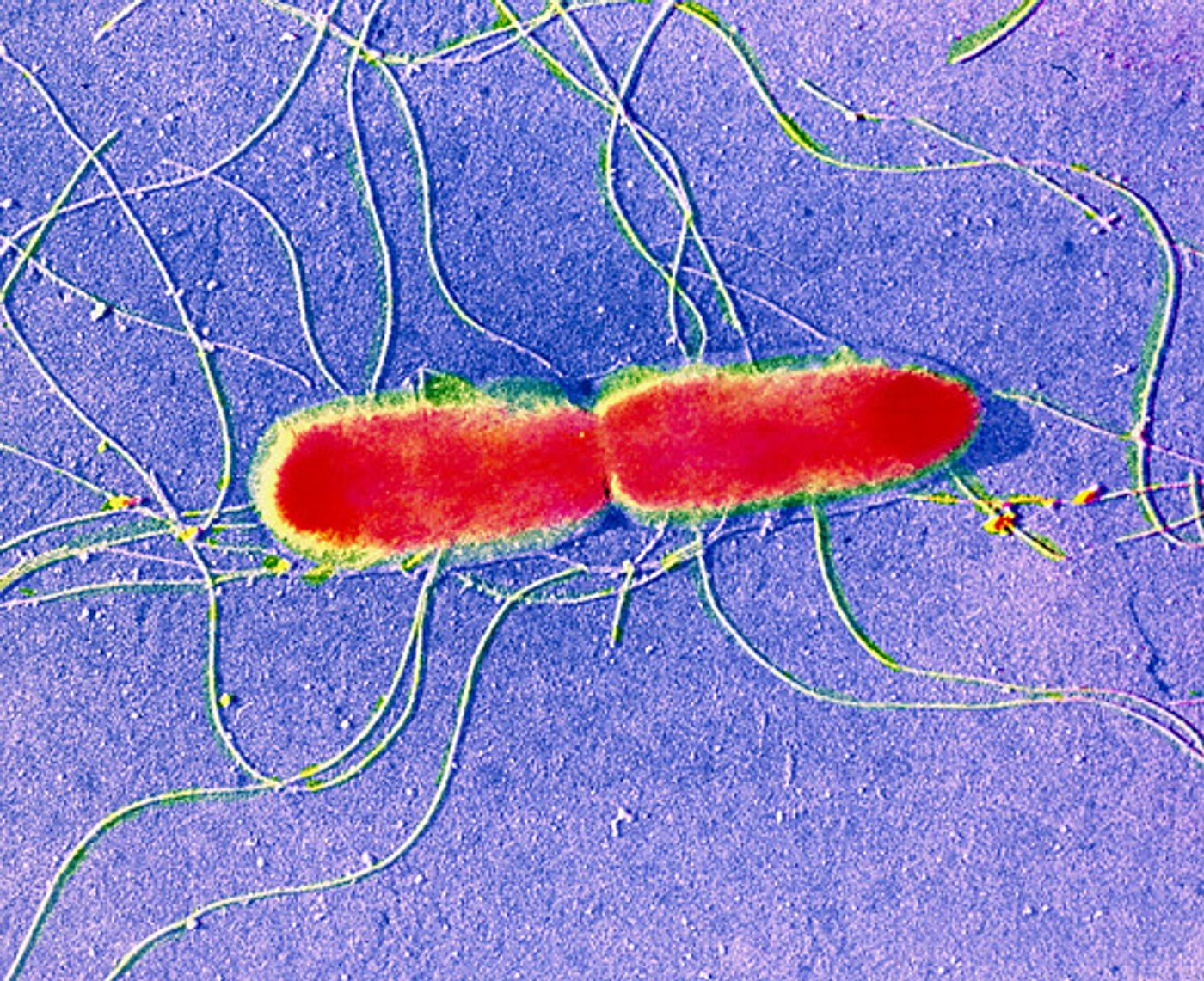Many people will recognize the name “Typhoid Mary”. I doubt, however, that many people know the full, rather tragic, story.
When I originally read Anthony Bourdain’s popular book on Typhoid Mary, I got the feeling that Mary Mallon was a careless (even malicious) figure. (This is my interpretation, I can’t speak for Bourdain’s intentions.) I’ve decided to revisit the subject, hoping to see Mary in a different light.
Typhoid fever is caused by
Salmonella typhi, a Gram-negative, rod-shaped bacterium. Common symptoms are a high fever, weakness, headaches, abdominal pain, and constipation. In some cases, people develop a skin rash. Cases of typhoid fever are relatively rare in the developed world, owing to a typhoid vaccine and the use of antibiotics. The majority of cases occur in India, and 11 million cases were reported worldwide in 2013.
Mary Mallon was born in Ireland in 1869, immigrating to the US in 1883 or 1884. She eventually found work as a cook for New York banker William Henry Warren. Coincidentally, a majority of the people living in his house on Oyster Bay came down with typhoid fever at precisely the same time that Mary was hired. Long Island public health officials were called in to investigate the outbreak, but they could not track down the source. Warren then hired George Soper, a sanitary engineer with the New York Department of Health, to get to the bottom of things.
Soper suspected that the Oyster Bay outbreak was caused by Warren’s hired servants. He did a little digging and found that outbreaks of typhoid fever seemed to follow Mary from one job to another - 7 of 8 families that Mary had worked for reported cases of typhoid fever. The problem was that Mary wasn’t sick - she was an asymptomatic carrier of
S. typhi, shedding the bacteria in her feces. The notion that someone could transmit disease without being sick was a new idea at the turn of the century, and, without any real evidence, Soper found it impossible to convince Mary that she was spreading disease.
Soper visited Mary at the Warren home, hoping to convince her to submit samples for testing. Mary refused, reportedly running Soper off with a rolling pin. Next came an ambulance, two interns, three policemen, and Dr. Josephine Baker. When Mary saw them arrive, she ran out the back door - she was found by police at a neighbor’s house a few hours later. The police took her to Willard Parker Hospital where tests confirmed she carried
S. typhi. In fact, she was the first person in the US to be identified as an asymptomatic carrier of the bacterium.
At this point, Soper asked that she stop working as a cook or have her gallbladder (a reservoir for S. typhi) removed. She refused both offers and was promptly quarantined to the Riverside Hospitable for Communicable Diseases on North Brother Island in the East River. A few years later, she was released on the condition that she could not work as a cook. Surprisingly, she disobeyed the judge’s orders - she eventually changed her name to Mary Brown, took up as a cook, and eluded capture for the next five years.
She was finally found working at the Sloan Maternity Hospital in New York City and returned to isolation on North Brother Island. She lived on the island for the rest of her life, spending over 26 years in isolation.
The interesting thing is that Mary was quite well educated, I can’t blame her reluctance to believe Soper’s claims on ignorance - she reportedly spent her free time reading the New York Times and Charles Dickens. So, did she actually have malicious intent to spread disease? I don’t think so. There are reports, after all, that she often nursed her employers through bouts of typhoid fever. I think she was an immigrant who wanted to work and make a living. Absent conclusive evidence that she was spreading disease, I can understand her reluctance to believe Soper’s theory.
Beyond being an interesting story, the Typhoid Mary narrative is a lesson in medical ethics. Do you revoke a person’s civil liberties in the interest of public health and safety? What if Mary had been better educated about her condition? Could she have lived a relatively normal life within society without posing a danger to public health?
Sources: Annals of Gastroenterology,
The Bulletin,
Canadian Medical Association Journal, Wikipedia,










